Get PeakVisor App
Sign In
Search by GPS coordinates
- Latitude
- ° ' ''
- Longitude
- ° ' ''
- Units of Length

Yes
Cancel
Share ×

Scan the QR code and open PeakVisor on your phone
❤ Wishlist ×
Choose
Delete
Medvednica is a breathtaking oasis of forests right above Zagreb, the capital city of Croatia. With 70 maintained trails and a million visitors yearly, it is a great tourist spot and a fantastic place to hike or relax. There are 26 named mountains in Park Prirode Medvednica. The highest and most prominent mountain is Sljeme (1,042 m/ 3,418 ft).
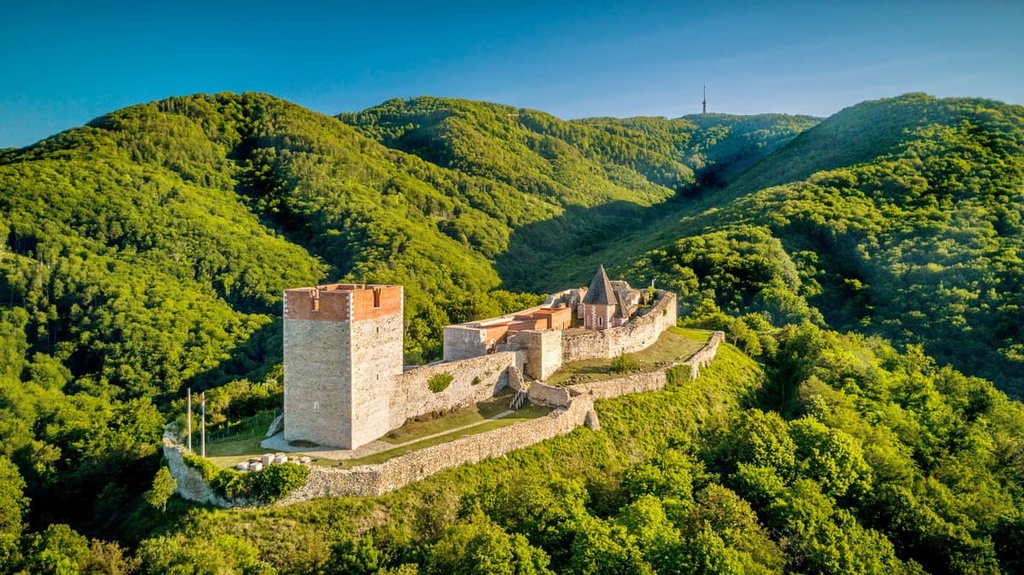
Medvednica Nature Park lies in central Croatia, just north of the capital city of Zagreb. The park covers an area of over 228 sq. km (141 sq. mi), encompassing the Medvednica mountain range. It is part of the Dinaric Alps, which run in a southwest-northeast direction. The highest peak in the park is Sljeme, which rises to a height of 1,042 m (3,418 ft). Medvednica is often known also under the name Sljeme.
Rugged limestone cliffs, deep valleys, and thick forests characterize the park's landscape. The forested areas primarily comprise beech, oak, and chestnut trees, with some coniferous forest areas. The park is also home to several springs, creeks, and small lakes.
The Medvednica mountain range is an important watershed, with several rivers and streams flowing from its slopes. The Sava River, one of Croatia's largest rivers, is formed by the confluence of the Sutla and Kupa Rivers, both of which have their source in the Medvednica range.
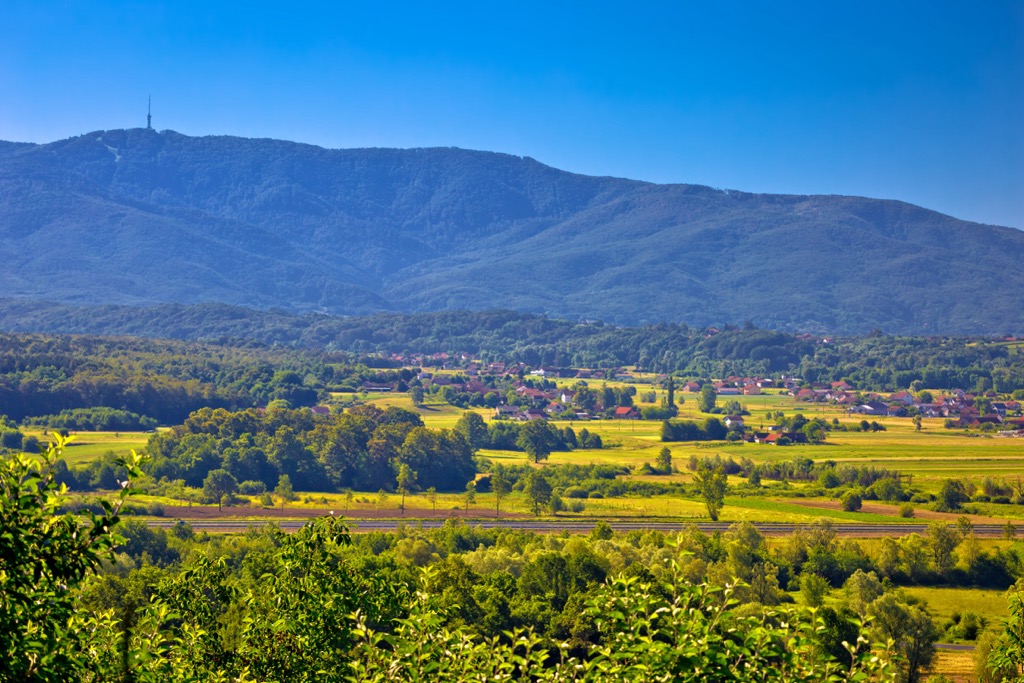
Humans have inhabited this mountain for the past 45 thousand years, dating back to the Neanderthals living in the Veternica cave. Nowadays, the cave is home to a diverse range of 18 bat species. The park's lowest elevation is 120 m (393 ft), and the highest is its peak, Sljeme (1,042 m/ 3,418 ft). The mountain is 42 km (26 mi) long and rests in Krapina-Zagorje County and Zagreb County.
The mountain's name is derived from the Croatian word for bear, as they used to roam in large numbers. Moreover, a thousand-year-old yew tree on the mountain might contain the elusive witch heart mushroom, a reminder of the times when witches would gather here, and touching the ground would make a red mushroom grow in that spot.
Despite being near a bustling urban environment, the mountain of Medvednica has managed to survive and thrive. It now serves as a protected area and a natural park for Zagreb.
Overall, the geography of Medvednica Nature Park is characterized by its stunning natural beauty, with breathtaking vistas and a diverse range of flora and fauna. Over time, the mountain has attracted different groups of people, from farmers selling their produce at the market to city folks seeking leisure and relaxation in its verdant surroundings. The mountain of Medvednica is a natural treasure cherished by many.
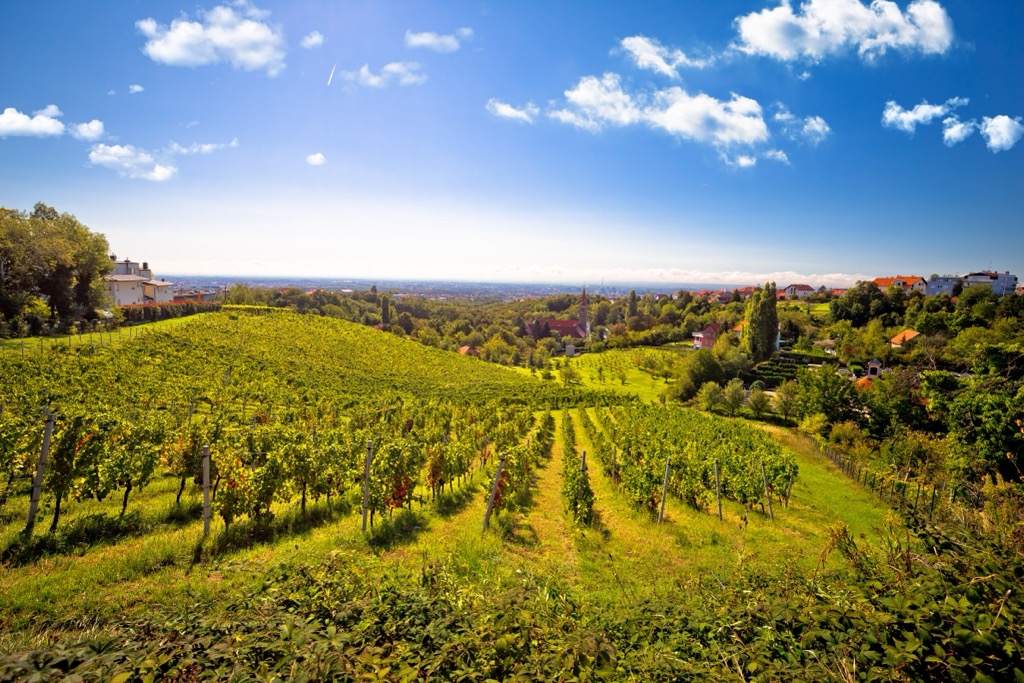
Medvednica Nature Park boasts a rich geological history, with some parts of its rocks formed by the deposition on the bottom of ancient seas that dominated the Earth in the past. These rocks are home to fossils of marine organisms found in different parts of Medvednica.
The rocks of Medvednica obtained their present position through the turbulent processes of rising and subtracting, folding, and fracturing of the Earth's core. Its present-day center rose from the deep faults around 12 million years ago. Medvednica boasts all three basic types of rocks: igneous, sedimentary, and metamorphic.
The geological history of the area is quite diverse. The seas that once covered the mountain were not always the same, as they receded and expanded and became deeper or shallower, more or less salty over time. Therefore, the mountain was entirely flooded at times, while at other times, it protruded like an island surrounded by the sea or small lakes and swamps.
Most of the mountain's body consists of metamorphic rocks, particularly Greenschist, a mineral now protected by law. Greenschist has become a symbol of Medvednica and covers the facades of many buildings on the mountain, such as Tomislavov Dom and the Chapel of Our Lady of Sljeme, Queen of Croats.
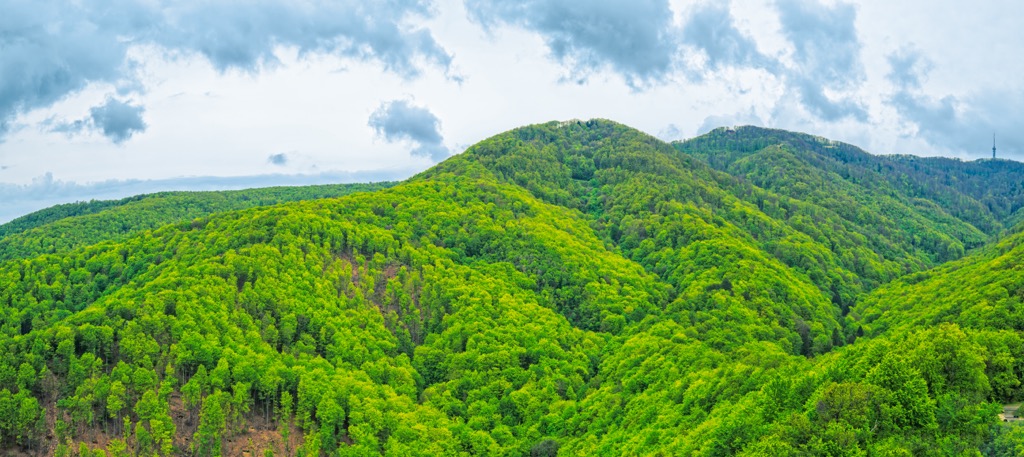
The Lithothamnium limestone and Triassic dolomites are also present on Medvednica, forming a unique karst area on the mountain's west side. Many karst forms, such as caves, pits, sinkholes, and valleys, are visible. The Veternica Cave is one of the deepest caves in Croatia. Visitors can also see the playful karst forms of Medvednica in Horvatove Stube and the limestone Lipa-Rog area.
Medvednica is home to over 70 water sources and creeks, which exhibit a distinct mountainous character, featuring steep upper courses and less inclined lower parts. Although the water sources in Medvednica have a relatively modest capacity, their numerous quantity makes them ideal for water supply in smaller settlements. These water sources typically exist at altitudes exceeding 750 m (2,460 ft).
Adorned with typical stream bank vegetation, the creeks flowing through Medvednica harbor a diverse range of endangered fauna.
Despite their importance to the ecosystem, human activities, including construction, aggressive hydrological and technical measures, wastewater pollution, and illegal waste disposal threaten the creeks of Medvednica.
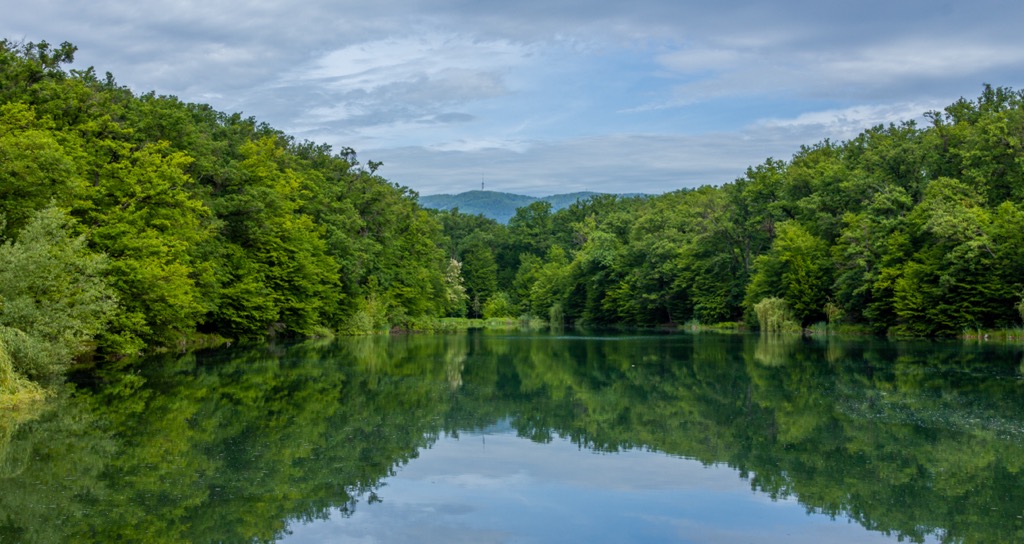
People have been exploiting the stone treasure of Medvednica since ancient times, with the first quarries dating back to the Roman period. Numerous fossils and minerals can be found in abandoned quarries, making them popular among scientists and nature lovers.
They can also venture on one of the numerous mountain peaks here:
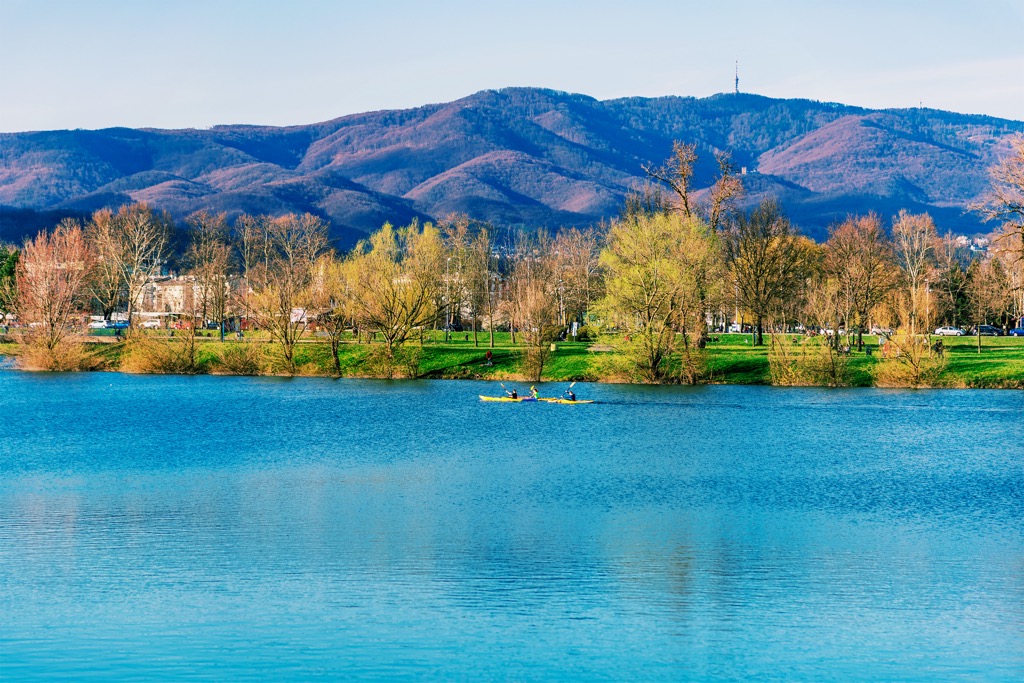
Medvednica boasts a "beech climate" featuring notable seasonal changes. It’s an ideal destination to escape the heat during summer and a refuge from the lowland fog during winter. Interestingly, the upper mountain records 100 more sunshine hours annually than its base.
The plant world of Medvednica is a rich and diverse environment that boasts many unique and exciting features. Scientists have recorded 1,453 species and subspecies on Medvednica, which accounts for about 24% of the total Croatian vascular flora.
The diverse flora on Medvednica results from changes in the Earth's climate throughout history. As a transitional area where different plant-geographic regions meet, Medvednica provides a valuable habitat for various plant species.
Additionally, human activity has created a valuable mosaic of farming cultures, grasslands, vineyards, orchards, and natural habitats, increasing the area's biological diversity. There are 12 different forest communities on Medvednica, each demonstrating this mountain's diversity.
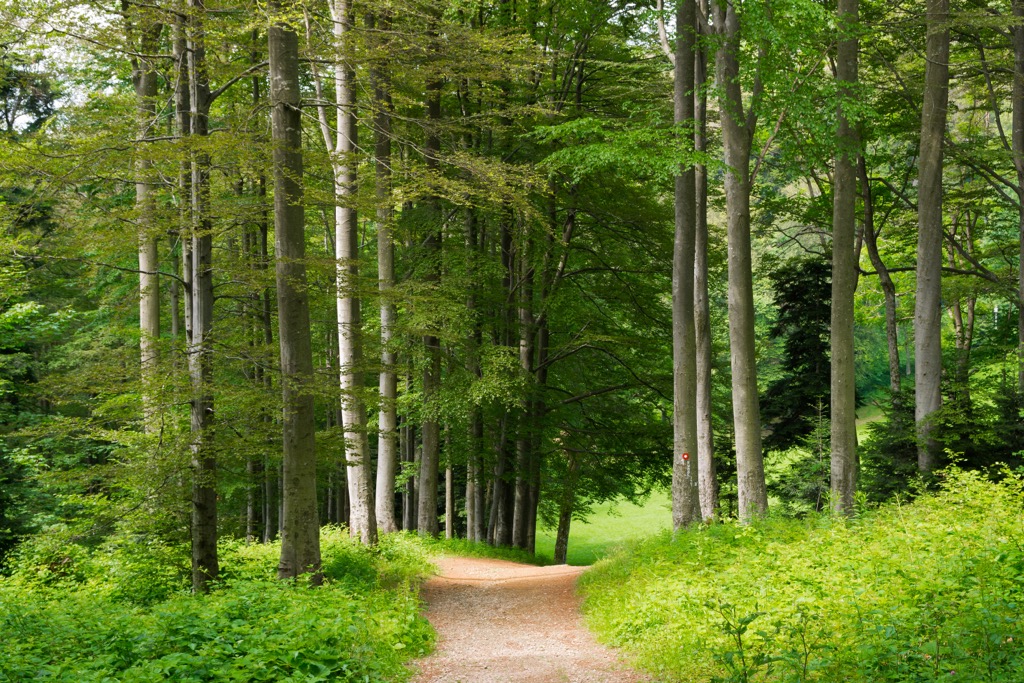
The forests’ biodiversity led to the declaration of eight special forest vegetation reservations in 1963, prohibiting economic activities from disrupting the natural balance. The beech forest is the most common type on Medvednica; locals call it "the mother of all forests."
Artisans build furniture and many other valuable objects from beech wood. The Nature Park has several beautiful locations with beech wood, including the forest reservations Mikulić Potok – Vrabečka Gora and Pušinjak – Gorščica.
There are 54 strictly protected and 154 protected plant species in the Park. One of the strictly protected species is the common yew, a beautiful conifer successfully grown in cities but endangered in its natural habitats across Europe. The yew tree on Krumpirište, over 1,000 years old, is considered the most beautiful yew tree in Medvednica!
Medvednica is also home to two species of strictly protected lilies: the Carniolan lily and the Martagon lily. These beautiful flowers decorate the mountain between June and August but are often targeted and plucked. Medvednica, which means "bear mountain" in Croatian, was named after the bears that once roamed its forests. However, these animals, along with the wolves, lynxes, and deer, are no longer present on the mountain.
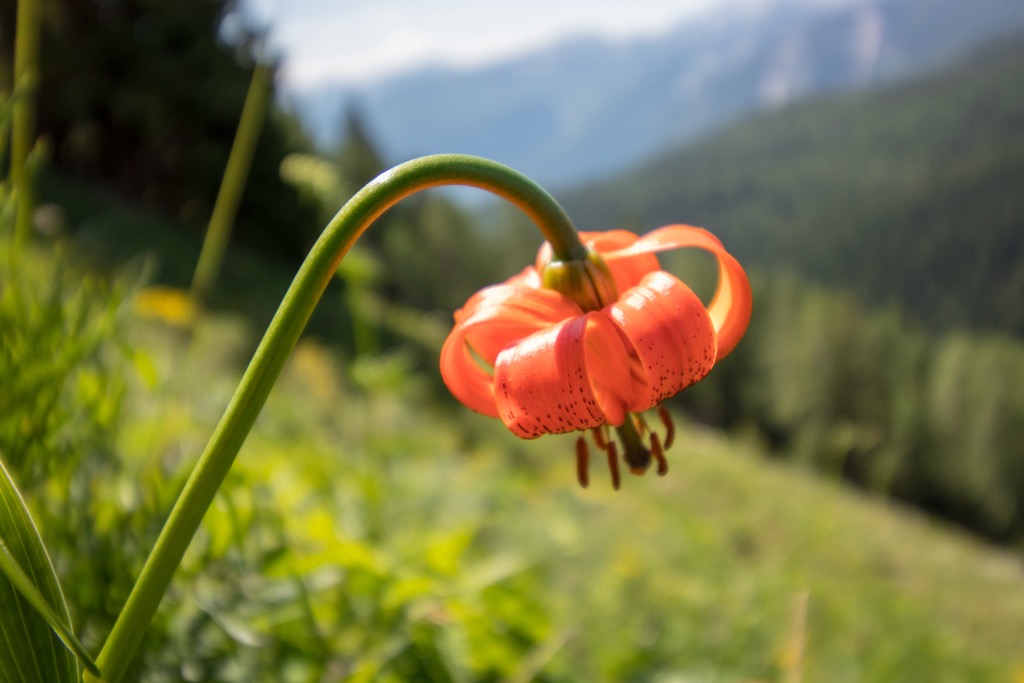
Medvednica has maintained an ecosystem home to a diverse and fascinating animal world despite its proximity to a large city. Biologists have studied the region since the second half of the nineteenth century.
Various mammal species inhabit Medvednica's forests, ranging from small rodents like mice, rabbits, dormice, and voles, to large hoofed animals like roe deer and wild boar. Several carnivores, including wildcats, foxes, martens, and weasels, also live in the park. Bats are an exciting group of mammals, with 24 bat species living in the park.
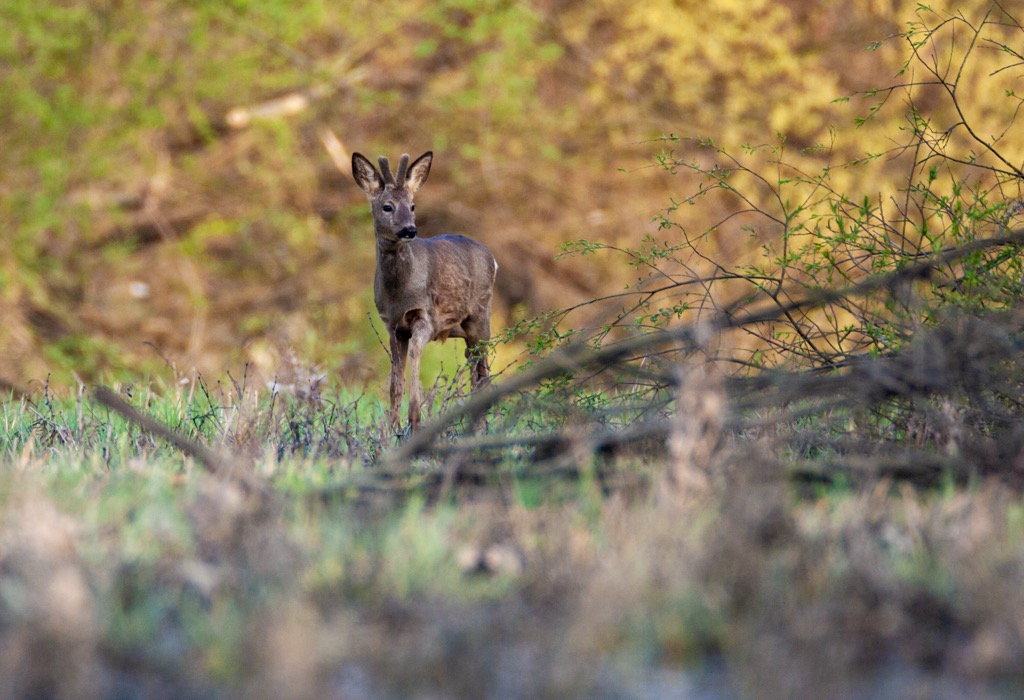
Birds of prey, such as the common buzzard and northern goshawk, dominate the skies above Medvednica. Numerous songbirds bring the forest to life with diverse songs, including the common chaffinch, robin, and several tit species. Frogs also make their presence known with their vivid croaking, particularly in wetter habitats such as creeks, fish ponds, and puddles of water.
Keen observers may spot amphibious species like the yellow-bellied toad and black-yellow-colored fire salamander. Several reptile species, including the horned viper, our best-known venomous snake species, inhabit the forests.
People have lived alongside Medvednica since ancient times due to the mountain's abundant resources. Its slopes, forests, meadows, fertile fields, and many springs and streams have enticed people to settle here since Prehistoric times.
Evidence of human settlement on Medvednica can be traced back more than 45,000 years, to when Neanderthal hunters of Musterian culture inhabited the Veternica Cave. There are over 20 archaeological sites in the National Park, and over 60 cultural properties in the surrounding area, indicating continuous habitation of the mountain and its surroundings.
During the stormy thirteenth century, nomadic hordes of Tartars invaded from the east. People sought protection behind the stone walls of fortified strongholds dominating inaccessible hilltops.
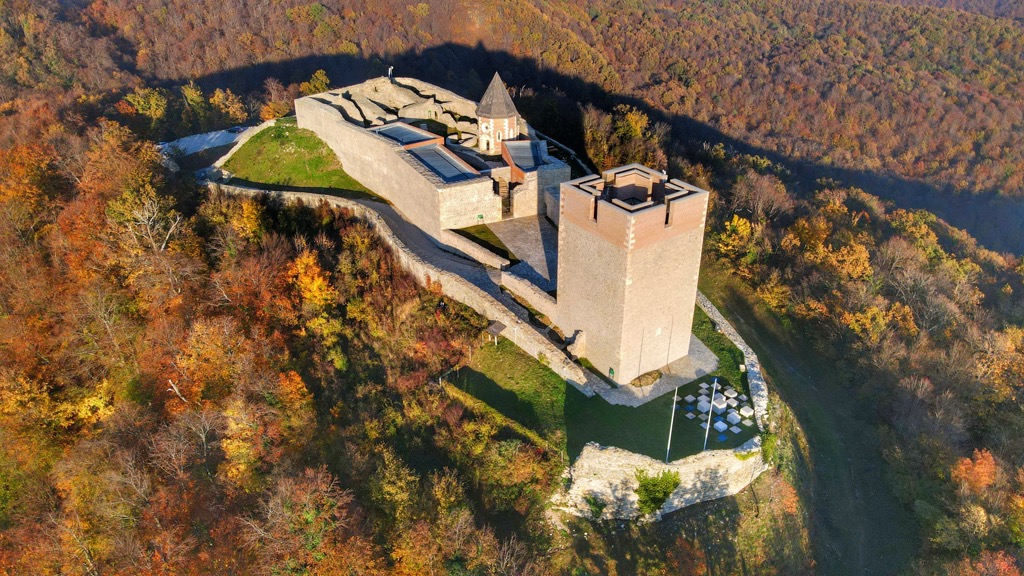
Castles, such as Medvedgrad, Susedgrad, and Zelingrad, were constructed during this period, all lying today in Nature Park Medvednica. Later on, this system of fortifications played an essential role in preventing Turkish invasions further to the west.
In the Middle Ages, life centered around these fortified strongholds. Settlements crowded as close to the walls as possible. Changes came only in the seventeenth century with the end of the Turkish wars, when many noblemen left military service and returned to their family estates on the slopes of Medvednica.
They started to build new manors and summer palaces surrounded by beautiful parks, which became the centers of economic, social, and cultural power. The abolition of serfdom brought about the decline of large feudal estates. With the twentieth century came a revitalization of these historical abodes as cultural artifacts.
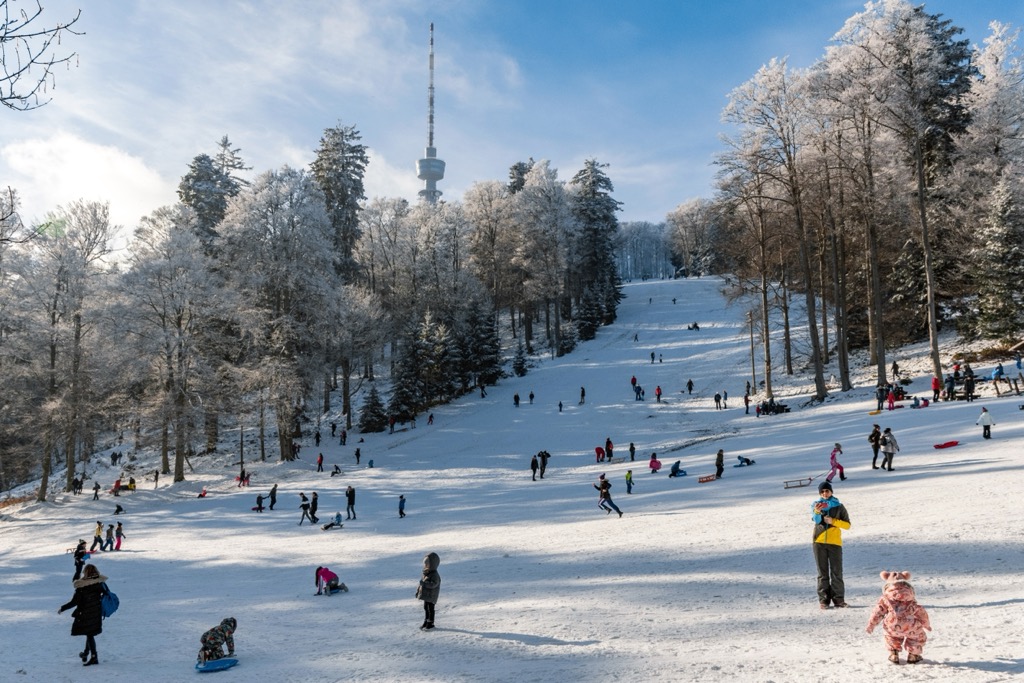
The Mountaineering Trail 1, also known as "1M" or "M," is a 45 km (28 mi) hiking trail that runs along the entire ridge of Medvednica. It takes 15-20 hours to complete, and the Sljeme Mountaineering Society is responsible for maintaining the route. While many other trails intersect Trail 1, some parts are narrow and difficult to follow. Other nearby trails are broader, less technical, and easier to follow.
Mountaineering Trail 39 is a hiking trail that starts from Stubičke Toplice in Zagorje, goes through Pile Village, and ends at the top of Medvednica, Sljeme (1,042 m/ 3,418 ft). The trail has two entrances; the Medvednica Nature Park sign marks one, while the other is behind Maksimilijan Vrhovac Park.
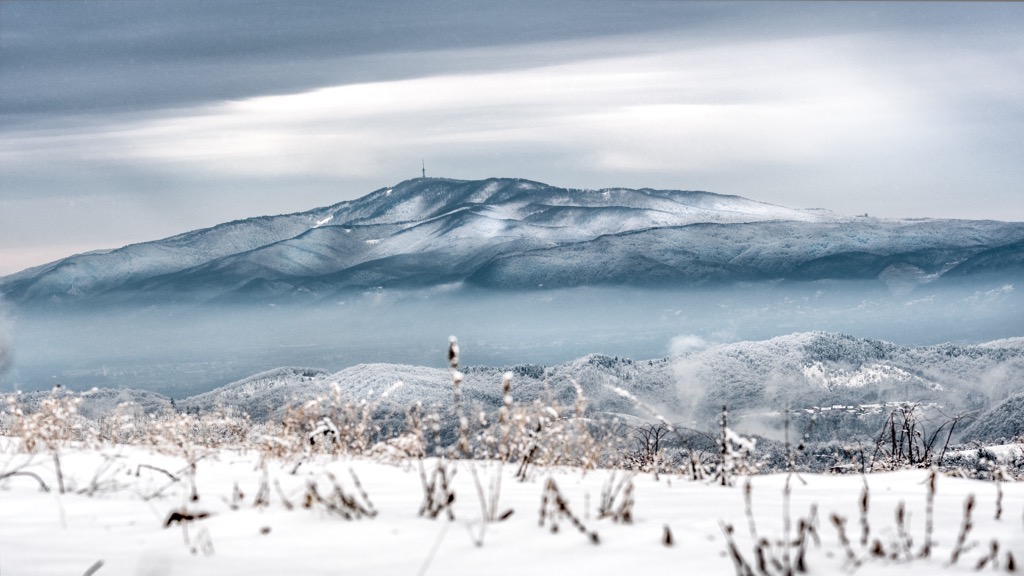
The two paths join near St. Catherine's chapel. Along the way, hikers will see the chapel of St. Katarina on Kapelščak Hill, which has a wooden cross and a memorial plaque for the Peasants' Revolt of 1573. The entire trail from Stubak to Sljemen takes about four hours to walk.
A licensed guide can show you around the cave's 380 m (1,246 ft) of canals and point out the beautiful rock formations, like the Stone Waterfall. You can also squeeze through the narrow passage known as Gibraltar. The hike from Dubravica is around 1 km (0.6 mi) long, perfect for an afternoon hike and sightseeing.
Bats mainly inhabit Veternica Cave, as all other species are extinct. These bats use the cave as their favorite winter shelter, so it’s only open for visits from April to October. You can even see some bats in the spring.
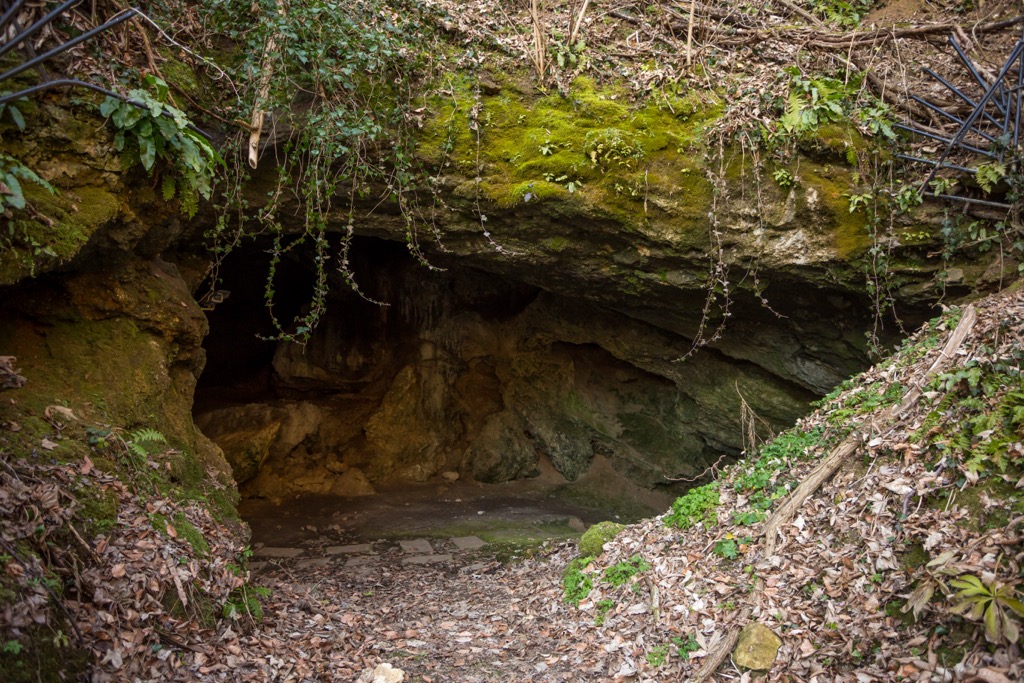
These are the most significant cities around Nature Park Medvednica:
Zagreb is Croatia's capital and largest city, located in the northwestern part of the country. It is known for its rich history, stunning architecture, cultural heritage, and vibrant atmosphere. The city has around 800,000 people, making it the most populous city in Croatia.
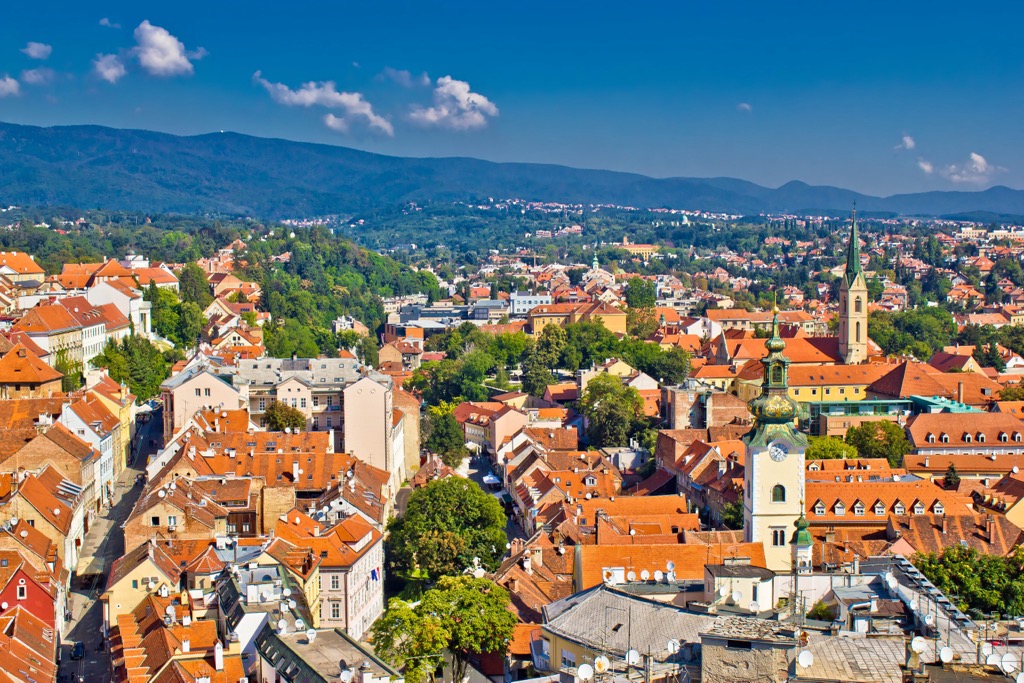
Zagreb is a popular tourist destination, offering visitors a variety of attractions to explore. The city's historic center, Upper Town, is a charming area filled with cobblestone streets, cafes, museums, and galleries. One of the prominent landmarks in this area is St. Mark's Church, with its picturesque tiled roof.
The nearby Zagreb Cathedral is another impressive landmark with its towering spires and stunning architecture. As a popular tourist destination, Zagreb offers many accommodation options, ranging from budget hostels to luxury hotels. There are also many private apartments and villas available for rent.
Karlovac is a small city in central Croatia, 55 km (34 mi) southwest of Zagreb. The city has approximately 50,000 people and is known for its history, natural beauty, and outdoor activities.
One of the main attractions in Karlovac is the old town, which dates back to the sixteenth century. The old town features well-preserved Renaissance and Baroque architecture. The city is also known for its four rivers, which converge in the city center: the Kupa, Korana, Mrežnica, and Dobra. These rivers provide opportunities for fishing, kayaking, and other outdoor activities.
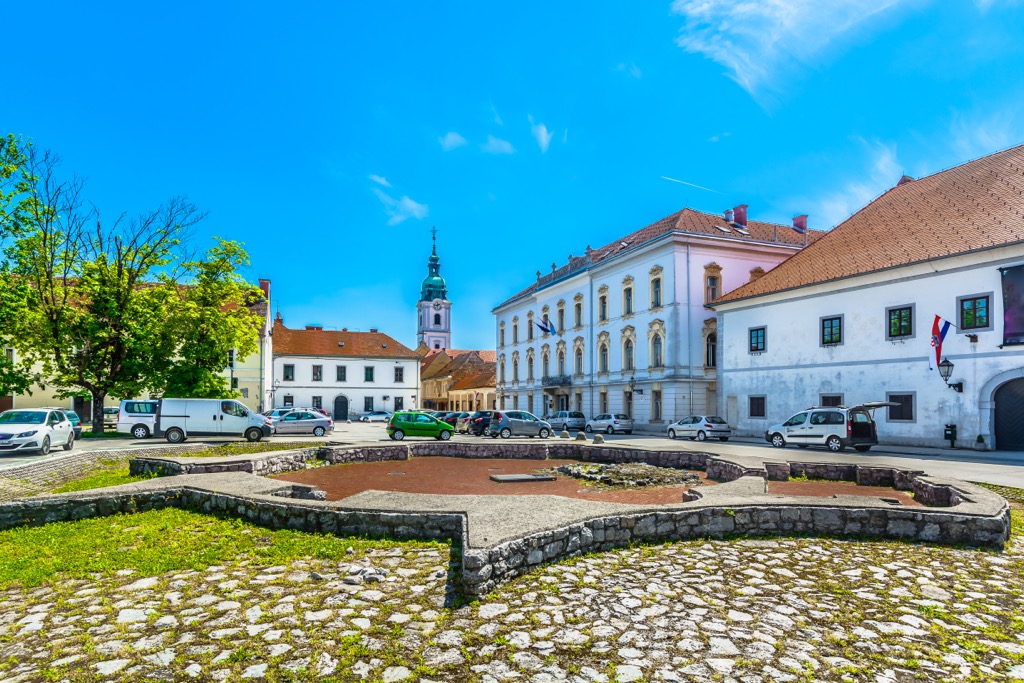
The city has several accommodation options, including hotels, hostels, and private rentals. One popular option is the Hotel Korana Srakovcic, located on the banks of the Korana River.
Celje is a city in Slovenia, in the central part of the country. It is known for its rich history, cultural heritage, and stunning natural surroundings. With a population of around 38,000 people, Celje is the third-largest city in Slovenia, after Ljubljana and Maribor.
The city is on the banks of the Savinja River, surrounded by the picturesque hills of the Lower Savinja Valley. Regarding accommodation, Celje offers a variety of options for travelers, from budget-friendly hostels to high-end hotels. Visitors can choose from various accommodations, including cozy guesthouses, apartments, and traditional Slovenian farm stays.
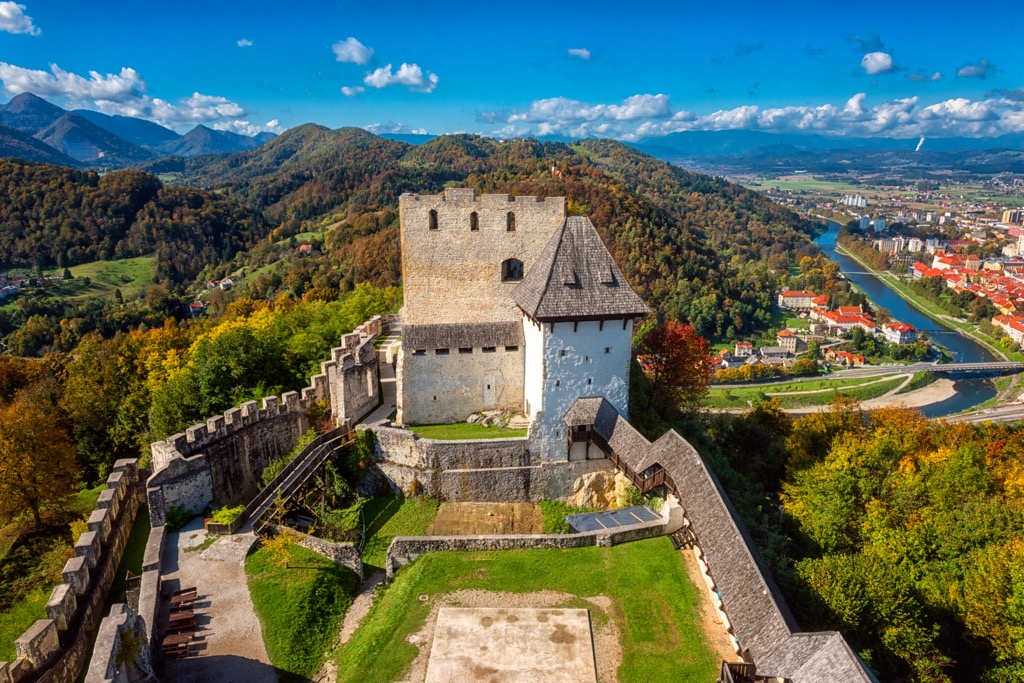
Explore Park prirode Medvednica with the PeakVisor 3D Map and identify its summits.








